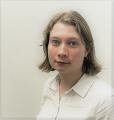
Breckland Council said it is 'committed to promoting equality' after it emerged the difference in pay between men and women there is greater than in any other public body in Norfolk.
Across the county's seven district councils, gender pay gap reports reveal that in five of the seven councils women face median hourly pay deficits of as much as 31.3pc.
At Breckland Council, on average, women earn 69p for every £1 that men earn.
A Breckland Council spokesman said: 'Breckland Council is committed to promoting equality in all activities, including in the employment of staff. The gender pay gap shows the difference in the average pay between all men and women in a workforce, regardless of the jobs they do, rather than being a measure of equal pay.
'We will continue to look in more detail at our pay gap figures and take action where appropriate.'
Meanwhile, North Norfolk District Council (NNDC) was found to have second largest wage discrepancy in the county. At NNDC, the average woman is paid 27.5pc less than the average man.
Steve Blatch, Corporate Director and Head of Paid Service at NNDC, said: 'We are proud of our record when it comes to the career development of both men and women.
'The pay-gap figures are a snapshot of a particular moment in time. Two years ago, this figure would have looked very different when we had a female chief executive and several other women in senior roles.
'The gender pay gap is affected by a range of factors, including the demographics of the council's staff. These include a high number of female employees (on a near 2:1 basis), and that impacts on the median pay gap. This is partly because we offer flexible working, which is particularly attractive to working parents (many of whom are women) and carers.'
In South Norfolk Council and King's Lynn and West Norfolk Borough Council, women's median hourly pay is higher than that of their male colleagues, whilst Norwich City Council reported no difference in median pay between men and women. Norfolk County Council reported a median pay deficit of 9.7pc between men and women.



Comments: Our rules
We want our comments to be a lively and valuable part of our community - a place where readers can debate and engage with the most important local issues. The ability to comment on our stories is a privilege, not a right, however, and that privilege may be withdrawn if it is abused or misused.
Please report any comments that break our rules.
Read the rules here